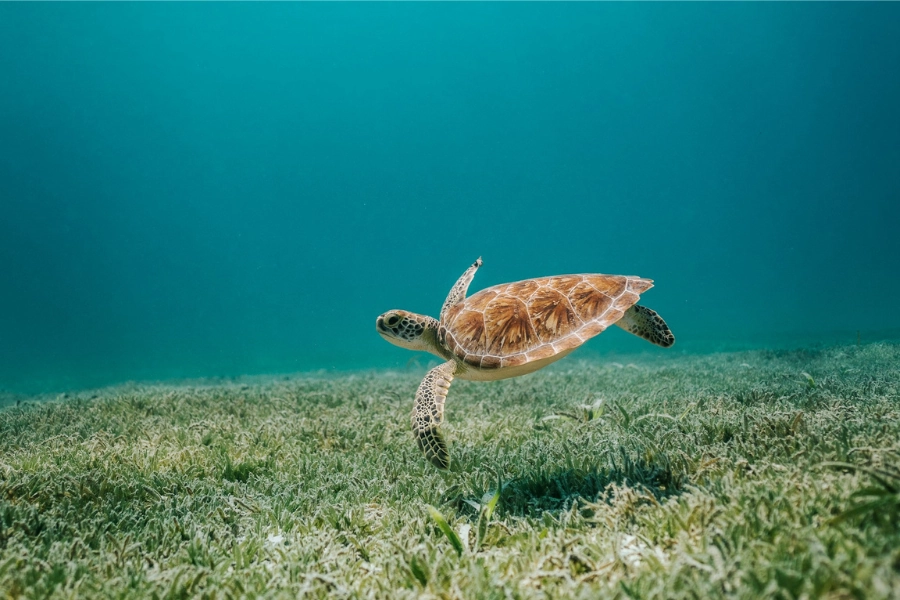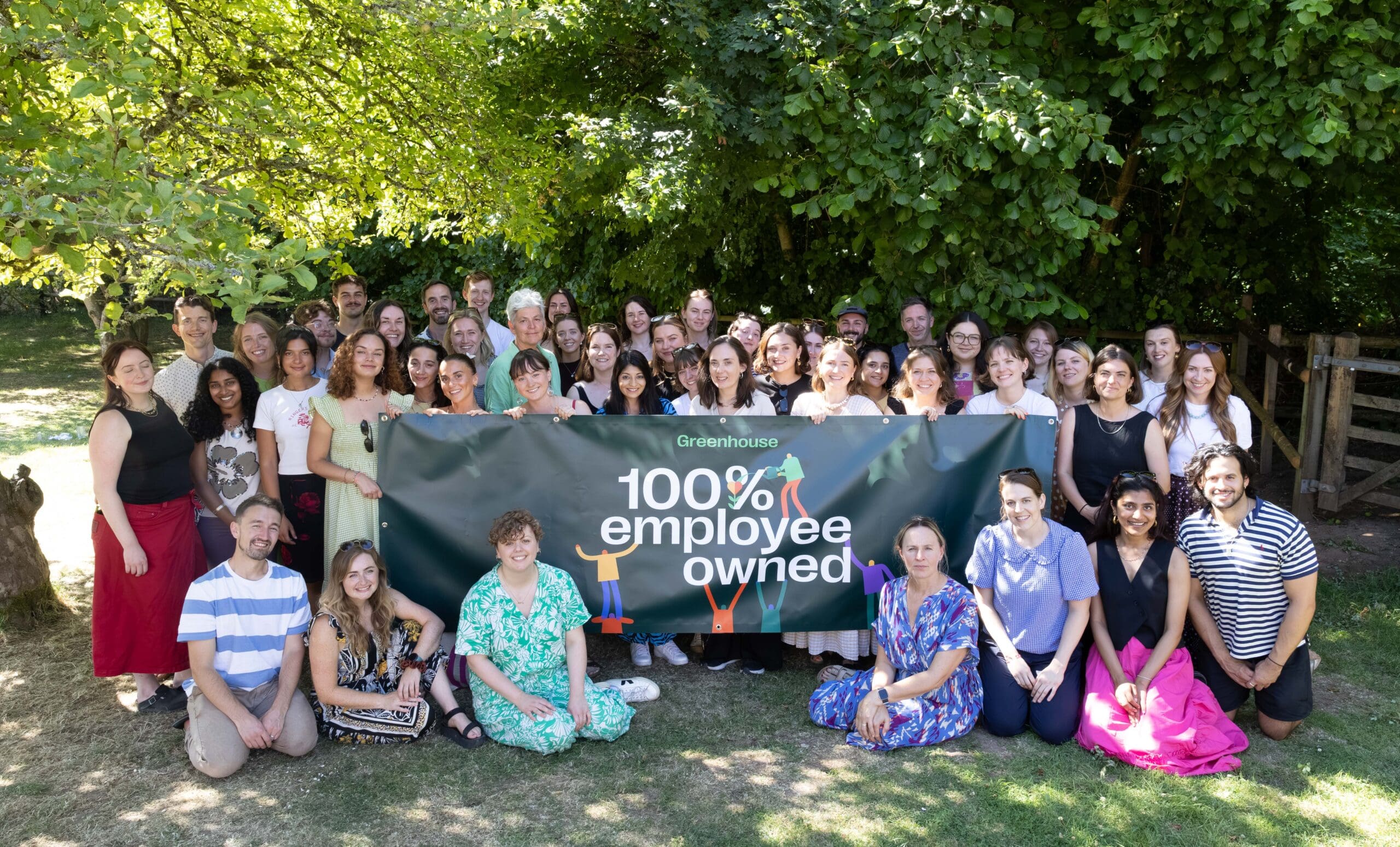World Ocean Day: top tips for communicators

Now is the ocean’s time to shine in climate communications – here’s how:
How do you get audiences to engage with ocean campaigns defending marine wildlife and protecting their habitat? That was one of the questions posed to us by The Nature Conservancy, who commissioned Greenhouse Communications and Communications Inc to undertake a major audit of traditional and digital media. Over the past few months, we’ve analysed 40,000 articles and 500,000 social posts and conducted more than 20 interviews with leading minds from ocean-focussed NGOs, as well as journalists, academics and activists.
A plethora of graphs, spreadsheets and post-it notes later, here’s what we discovered…
Most people don’t really understand the ocean
As land-lubbers, the closest most of us get to understanding the ocean is admiring it from the coast. But it is “more than just a blue filter that has fish in it”, as one interviewee expressed. It is “a machine that runs on energy. And if you give it extra energy, the machine is going to change shape. And that’s the problem.”
It is, therefore, a huge dynamo, powering the earth’s climate and supporting an intricate web of ecosystems encompassing human, animal and plant life. It’s also an unsung climate hero, having absorbed 90% of human-generated heat and 30% of our carbon. But we cannot hope to protect it unless we truly understand it.
This could be the ocean’s moment
We tracked steadily rising mentions of the ocean across global media coverage over the past 15 months. It is a period which has seen the High Seas Treaty adopted; COP28’s Global Stocktake recognising the role of ocean in climate change more meaningfully than ever; multiple ocean conferences; the run-up to the UN Ocean Conference in 2025; a raft of ocean funding announcements; and a flood of interest in blue carbon and (deep breath) marine carbon dioxide removal.
But we know that human interest is fickle. Several of the experts we spoke to are worried that rising interest in the ocean could evaporate.
Given this, and the urgency of the climate and biodiversity crises, it is imperative that ocean storytelling is as compelling as possible. So, how do we do that?
Localise the global
Our audit found that overarching themes like acidification and sea-level rise rarely lead to ocean-climate coverage. What tends to dominate instead are hard news items like extreme weather events (which garnered 42% of our audit’s climate-related media coverage).
But there is a way to make these overarching themes generate headlines: make them locally specific. Journalists we spoke to had found that this drove audience engagement in stories about cities including London and Nice.
Personalise the conceptual
It is a well-worn trope of communication that storytellers should put people at the heart of their narratives. But it is borne out by our media audit and corresponding interviews. Many of the most impactful examples of ocean communication start with the story of an individual. Sometimes they are pitted against a greater force in a David and Goliath-style framing, as in this BBC piece about a campaigner from Tuvalu. Sometimes they simply give a human perspective to the impact of a broad issue.
Another way concepts are personalised in ocean communications is by making them tangible. Several interviewees talked about the effectiveness of appealing to audiences through the lens of consumerism. A journalist reported significant engagement with a series of articles about salmon fisheries, telling us “people eat fish and want to know ‘what does that mean for me?”.
Know when it’s time to ‘get out of the way’
Many large NGOs are trying to shift away from top-down implementation towards genuine partnerships with Indigenous Peoples, local communities and small island states. They recognise that successful implementation depends on the expertise of generations of coastal and fisher communities, something policy-makers and grant managers will never have. But they don’t always get it right. Our analysis of media coverage suggests that the fastest route to a lack of credibility in environmental conservation is to simply pay lip service to this. It is not difficult to find examples of communities calling out NGOs for inadequate consultation.
Interviewees credit the birth of this shift not just from the sting of negative coverage or the threat of investigative reporting (take a bow Ian Urbina, who was cited approvingly by multiple interviewees) but also from the impact of global equity movements like #BlackLivesMatter and #MeToo.
NGOs are recognising this. One interviewee said: “Global narratives around decolonisation, even the #MeToo movement, has really pushed the thinking in many, many sectors to be more inclusive and intentional about approaches.”
Another said: “It’s not for us to empower [indigenous voices]. They actually already have it. We need to get out of the way”.
Tap into emotions that audiences want to feel
In our audit, we found that optimistic, solutions-led ideas such as blue carbon projects (particularly reef restoration) and other nature-based solutions drive high levels of engagement. People want to read hopeful stories rather than planetary doom and gloom. On social, coastal blue carbon efforts dominate 39% of ocean-climate conversations. And across both traditional and digital media, content about coral reefs and mangroves dominates conversations around habitat restoration.
After the newsworthy peak of the adoption of the High Seas Treaty, examples of compelling storytelling around the mechanics of ocean protection are few and far between. Overall, ocean protection makes up a very small part of the traditional media coverage (3%), relative to commentary on climate (48%) and fishing (26%).
If we are to reach 30% of ocean protected by 2030, we must continue to make the case for protected areas in the media. Now that we’re in the “unsexy” implementation phase of delivering these treaties, we need news stories to drive understanding and support. So the question of how to spark interest from audiences in complex subjects is critical to success.
“I think that where the community has really failed is in storytelling around MPAs. Even on the visuals. What about the species and the people that rely on them, or the biodiversity that’s there? I think that where we are failing is just talking about ‘X number of miles are protected’, and we’re not telling stories.”
Build public comprehension
Many interviewees spoke of concern about the speed with which geoengineering is moving: “Marine carbon dioxide removal (mCDR) is spreading like a virus, and nobody in the public knows what it is or what questions to ask…”
Other interviewees reflected on how the positive work isn’t being adequately reported: “There’s some great conservation work going on in the Global South but it’s not being connected to the global movement. We’re not sharing what we do best.”
From our research, it’s clear that public comprehension is a barrier to progress on ocean protection. The public, as well as decision-makers and governments, simply don’t understand the importance of ocean protection well enough to prioritise it. Part of the challenge is to make clearer the significant link between ocean health and climate change mitigation, and part is simply to bring more audiences into awareness about the solutions already in place.
If we are truly committed to achieve global ocean protection goals, we have to first understand and articulate its value, which presents a huge opportunity for communications.
If you have a story to tell about the role of the ocean in climate action and would like our support to amplify it, please get in touch with the team today.
Enjoyed this blog and interested in learning more? Here are some related articles:






